What is IRLP
IRLP stands for "Internet Radio Linking Project."
A person with a handheld radio has limited range. He can talk perhaps a mile or two to another handheld. With the use of a repeater, this range can be extended many miles. But still, the range will be only that which can be covered by the repeater.
SPARC has several repeaters in the area, all linked together by UHF radio. Thus, if the local ham is transmitting on the NOME repeater, his voice can be heard not only on the NOME repeater, but also on the linked ones, like NEWTON PEAK, SKOOKUM and GOLDENGATE repeaters. That markedly extends the range.
Imagine if instead of using UHF for linking the repeaters, you could use the internet. Voice-Over-IP, VOIP, would allow that. Possible protocols include "IRLP." There are others, significantly ECHO and ALLSTAR.
The network consists of nodes and reflector.
In its most basic form, IRLP is just nodes. The connected radio can be a plain radio like a handheld or mobile, or can be a repeater. In any case, the sound from the speaker, and the input to the microphone are tied to the node computer. In this computer sound is converted to digital data and vice versa, and sent out over the internet.
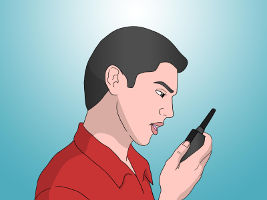 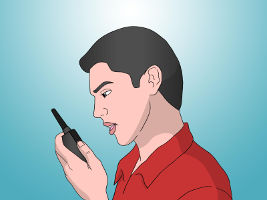
|
This shows direct radio-to-radio communications. |
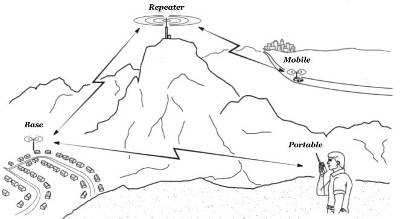
|
This is a typical repeater system, like SPARC's, showing a handheld, a mobile and a home station having a 3-way contact. |
The node computer is typically controlled by the user with his DTMF or dial pad on the radio.
A user can disconnect (73) or connect to another node or reflector by dialing its number. For instance, if you want to connect to reflector 9070, first key up the radio, and dial 73, then unkey. The node will disconnect from whatever it is connected to and announce that it did so. Then you key up and dial 9070 and unkey. The node computer will follow your command, connect, and announce that it did so.
The limiting feature of this system is that it is node-to-node. You can certainly connect to a node such as 3124 in New York City, and speak to users of 3124 via ham radio. But only node 3124.
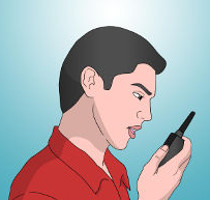

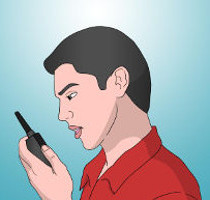
Internet is like a CAT with a long tail. You yank on its tail here in Nome, and it meows in New York City.
A reflector, on the other hand, is a server computer that can talk to many nodes at once. In effect, it is a REPEATER of NODES.
Lets say that you connect to reflector 9006, and it just so happens that other nodes such as 3289 (Unalakleet), 3124 (New York), 3288 (Teller) and of of course, the one here 7254 (Nome).
Look at the cartoon:

Note that now all 4 or our cartoon ham friends can converse with each other as if they were on a single repeater ... or, in this case, interconnected repeaters. The connection is done by IRLP over the internet. For clarity, only two nodes are shown; actually there are the four, one in each city.
A reflector ties together all the nodes dialed into it.
Procedures, customs, and etiquette.
My suggestion is you first listen to the node you are on. I will use the 7254 node in Nome, Alaska as an example. This node is tied in to the local repeater operated by RAM, on 147.36 PL=103.5
Tune or program your radio to this channel, this is standard ham radio use of your ham radio and will not be covered in this article.
Listen. And listen some more. If the node/repeater is connected to a busy reflector, like 9109, you will hear LOTS of activity specially in the mornings, between 9 am and 12 noon.
By listening you will learn a lot about the system, procedures and the bunch of guys using it.
Handling the node your radio is tuned to is easy. As explained above, you dial 73 to disconnect from whatever it is connected to, and then dial the 4-digit node or reflector number you want. This is typical of MOST nodes in the world. There are some individual exceptions.
Listen first and make sure you do not 73 something that is being used locally at the moment.
Nodes typically ignore commands such a 73 when they are transmitting. So if you need to disconnect from a busy node, you will have to wait for a pause to get your transmission in.
By the same token, if you want to speak into the node, you have to wait for a pause. This is usually not a problem.
Once you key up, wait one second before you speak. That pause allows the internet connections to settle down. Each time you speak into a node, the node computer makes the connection to the distant computer, etc. Specially on a satellite link, this may take a few moments. If you do not do that, then your first word or words may be clipped.
Follow typical ham radio protocol and give out your call sign as usual.
IRLP nodes are connected to radios; the system does not allow connections from a computer or cell phone with a headset. EVERYONE heard on IRLP is a ham, or at least a ham at the controls.
Some information on reflector 9006
Dave Cameron VE7LTD owns this reflector located in Vancouver, B.C., Canada. Bob Douglass KL3BD in Kotzebue administers it. This 9006 is called the Alaska Bush reflectors and ANYONE world wide can connect to it, but typically now has connections regularly from RAM Teller 3288, RAM Nome 7254, RAM Unalakleet 3289 and RAM Kotzebue 7827.
The four nodes mentioned above typically are always connected to 9006 on a 24x7 scheduled, except when manually connected to another node or reflector, or at scheduled times to 9109. The schedule varies by location depending on the local user base.
Some information on reflector 9109
This reflector is dedicated to the "Alaska Morning Net." This is a bit of a misnomer in that people all over the USA and world check in, but the core users, net controls, etc. are Alaskan. It is a good spot to get heard. From 9AM - 12 Noon (Not on Sunday), the Alaska Morning net typically receives between 40 and 70 check ins. Pedestrians with portables, cars with mobiles, the ocassinal boat or plane, and a lot of home stations. There is significant activity from the lower 48, England, New Zealand and Australia.
Copyright © 2016, Ramon Gandia.